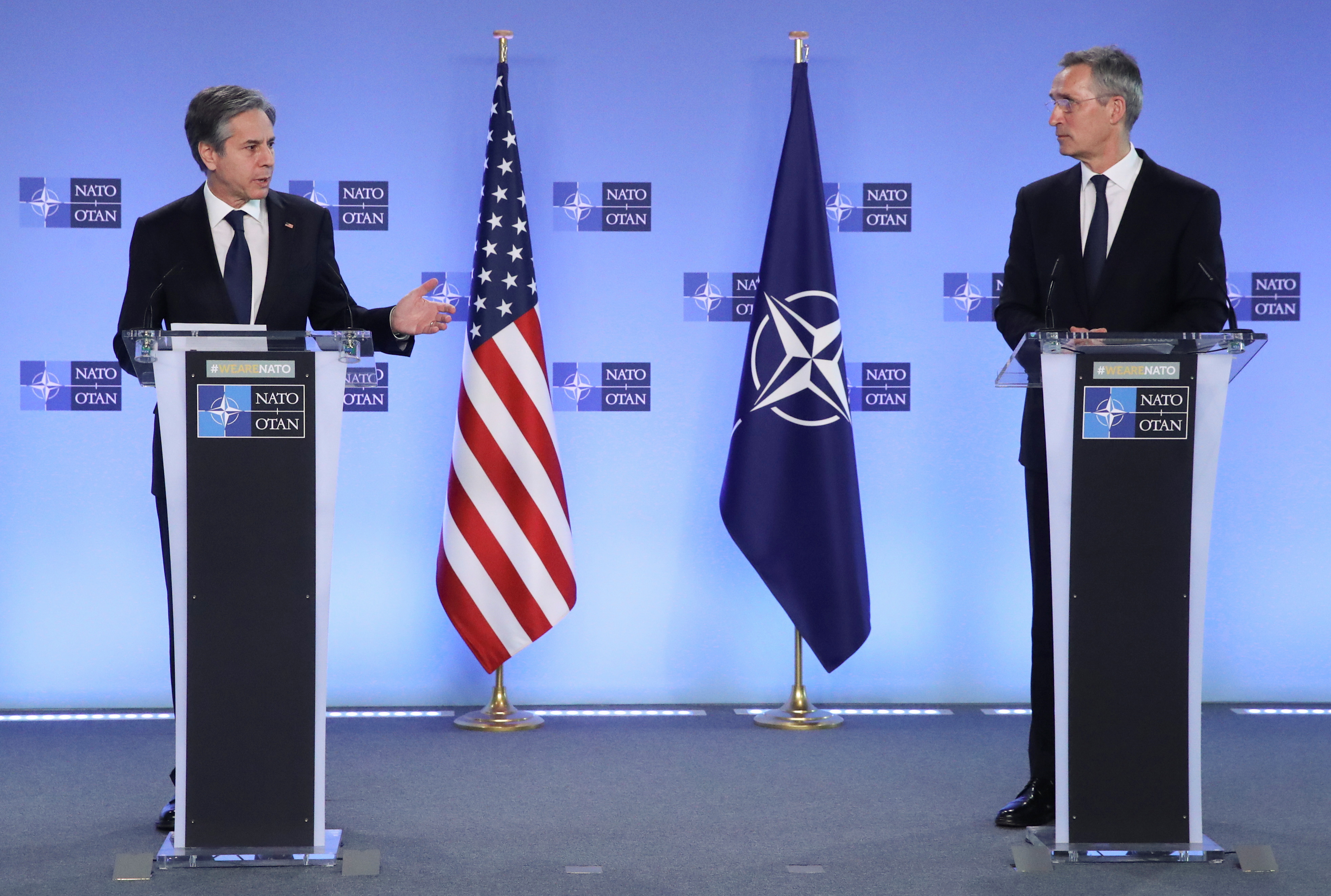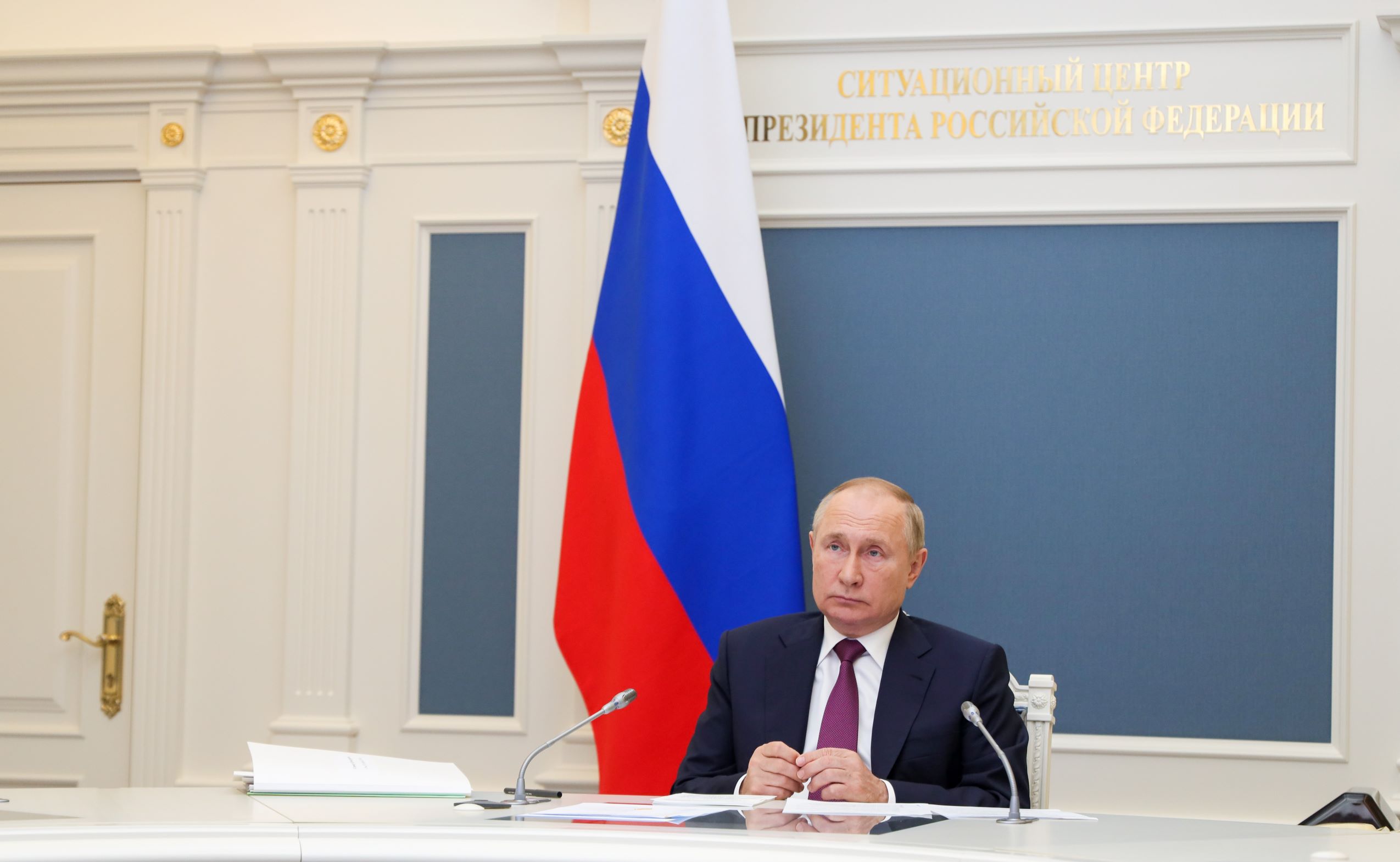The U.S. and NATO Deliver Written Responses to Russia's Security Demands and Proposals
On 2 February, the Spanish daily El Pais published written responses to Russia’s draft treaties from December 2021, delivered by the U.S. and NATO to Russia on 26 January. The authenticity of the American document was confirmed by the spokesman for the U.S. Defense Department, while NATO officials have not questioned the credibility of the second document. Both responses confirm the rejection of the key Russian demands and specify the offer of dialogue. Progress in the talks remains dependent on Russia’s reciprocity and de-escalation with respect to Ukraine.
 Fot. Reuters/ YVES HERMAN/ FORUM
Fot. Reuters/ YVES HERMAN/ FORUM
How did the U.S. and NATO respond to Russia’s main demands?
The U.S. and NATO did not agree to break with the Alliance’s open-door policy, withdraw allied forces from the Eastern Flank, or end military cooperation with Ukraine. Both documents criticise a number of Russian actions as destabilising and point to the need to respect all principles of European security and international law, conveying that the principle of the indivisibility of security cannot be viewed—contrary to the Russian preference—in isolation from the others. The U.S. also warns that increases to the Russian force posture in NATO’s vicinity and further aggression against Ukraine would force the strengthening of the American and allied defence posture in Europe.
The U.S. proposed reciprocal commitments not to deploy offensive ground-launched missiles or to permanently station combat forces in Ukraine. In practice, this means calling on Russia to withdraw all its forces from occupied Crimea and eastern Ukraine, since American forces conduct only limited training activities in Ukrainian territory and air reconnaissance.
What do the proposals on missile defence and intermediate-range missiles entail?
The U.S. offers to work out a mechanism (most likely inspections) that can confirm that—contrary to the Russian accusations—there are no offensive, intermediate-range Tomahawk missiles at U.S. missile defence sites in Poland and Romania. This would be dependent upon host-nation consent and getting reciprocal access to two selected bases of Russian ground-launched missile forces. Similar proposals were made by Poland over a decade ago.
The U.S. is also open to talks (with NATO offering consultations in the NATO-Russia Council, or NRC) on limiting ground-launched intermediate- and shorter-range missiles and their launchers. It is not clear whether this means that the U.S. is ready to join the moratorium on the deployment of such missiles in Europe. Russia declared one in 2019 after the U.S. withdrew from the INF Treaty, which had banned all such weapons (and was secretly violated by Russia). So far, NATO members have rejected the Russian calls to reciprocate on this moratorium, arguing that Russia already deploys such missiles in Europe and a moratorium would not stop it from building up its arsenal of them in the Asian part of Russia (implying that it could move them quickly to Europe).
What is the offer on exercises?
Unlike earlier remarks by American officials, the U.S. document does not mention directly the possibility of limiting the scale and scope of ground-based exercises (Russia has sought such limits in border areas). The U.S. offers a discussion on “increasing confidence” with regard to such large exercises, including modernisation of the Vienna Document (the update has been blocked by Russia, which also frequently circumvents its provisions, including by not inviting observers to exercises). NATO also calls for Vienna Document modernisation and additional transparency measures (such as return to exchanges of briefings on exercises in the NRC).
In addition, the U.S. is prepared to explore an enhanced exercise-notification regime and unspecified risk-reduction measures pertaining to nuclear bombers. This might entail limits on flights, which U.S. officials had suggested earlier. Russia wanted both countries to commit to not deploying any bombers or warships in any location outside their respective territories, from which they could attack the territory of the other side.
What else are the U.S. and NATO willing to talk with Russia about?
The U.S. and NATO are open to enhancements to mechanisms reducing the risk of military incidents. Russia has also called for this, although its forces have repeatedly performed dangerous manoeuvres close to NATO ships and aircraft. NATO supports the Russian proposal to establish a hotline between civilian representatives, but also calls for the reestablishment of Russian representation at NATO’s headquarters and NATO’s missions in Moscow (Russia suspended them after NATO expelled some Russian diplomats for espionage). NATO offers to discuss nuclear policies, threats to space systems, and cybersecurity.
U.S.—with NATO backing—repeated the proposal to discuss another nuclear arms control agreement with Russia, that would encompass not only intercontinental-range forces (as does the current New Strategic Arms Reduction Treaty, or New START) but also non-strategic nuclear weapons. Russia has demanded that the U.S. withdraws its much smaller non-strategic forces from Europe.
How did Russia respond?
Russia said that it would prepare a full response to the U.S. and NATO papers. President Vladimir Putin expressed hope that the dialogue will continue, although he criticised the U.S. and NATO for ignoring the key Russian demands. Russian Foreign Minister Sergey Lavrov made similar remarks, but also noted chances for progress on “secondary” issues (such as limits on intermediate- and shorter-range missiles). He depicted the U.S. response as “diplomatic”, compared to the “ideologically motivated” NATO paper. Talks with the U.S. remain the most important for Russia. Nevertheless, it will continue to attempt to intimidate and divide NATO members with regards to its demands and the potential allied response to another attack against Ukraine. It will try to do so through further preparations for such possible aggression and increased military activity near NATO borders. Additionally, Russia has called on a number of NATO and EU states to clarify their positions on the interpretation of the principle of the indivisibility of security.





_sm.jpg)